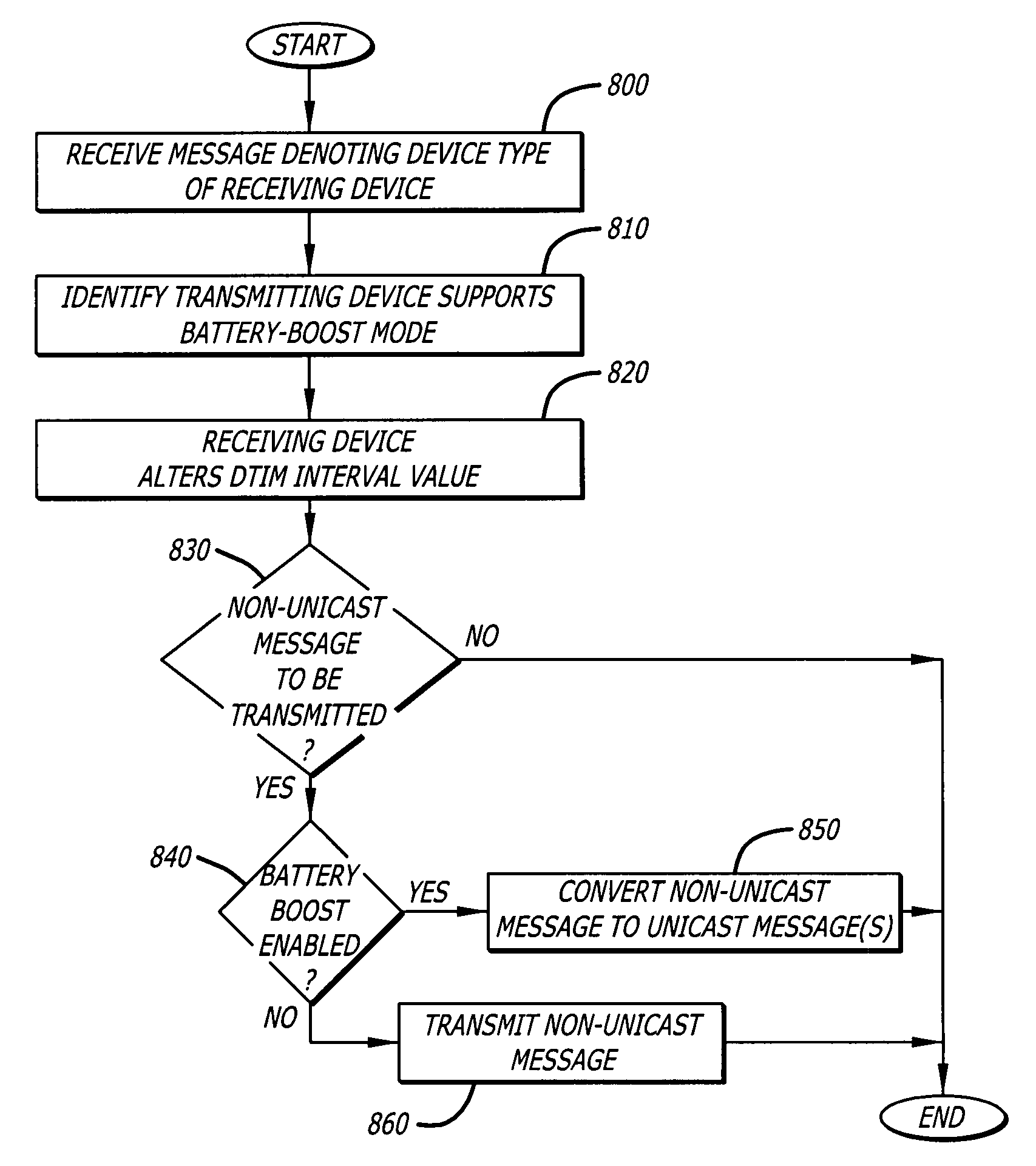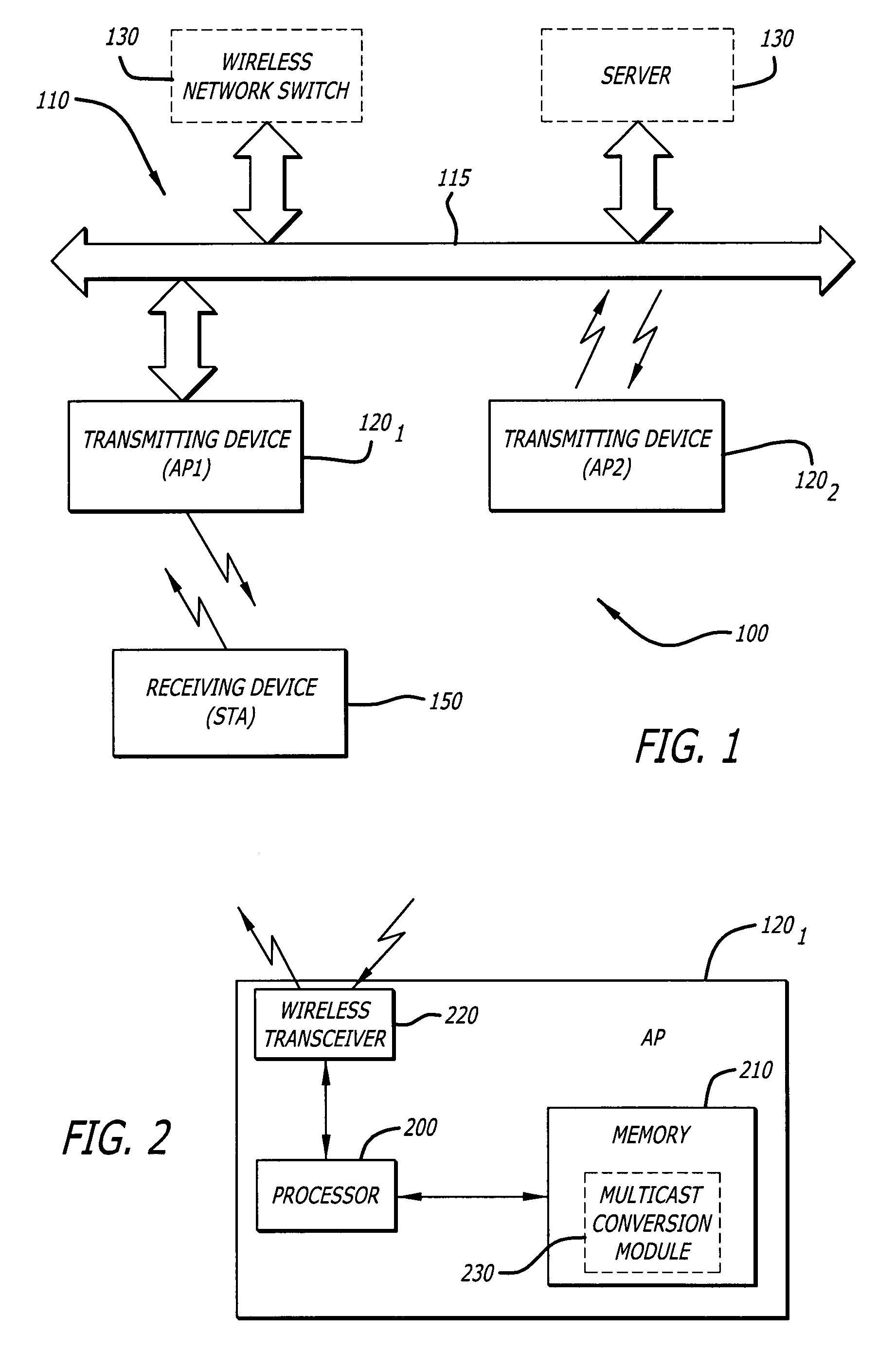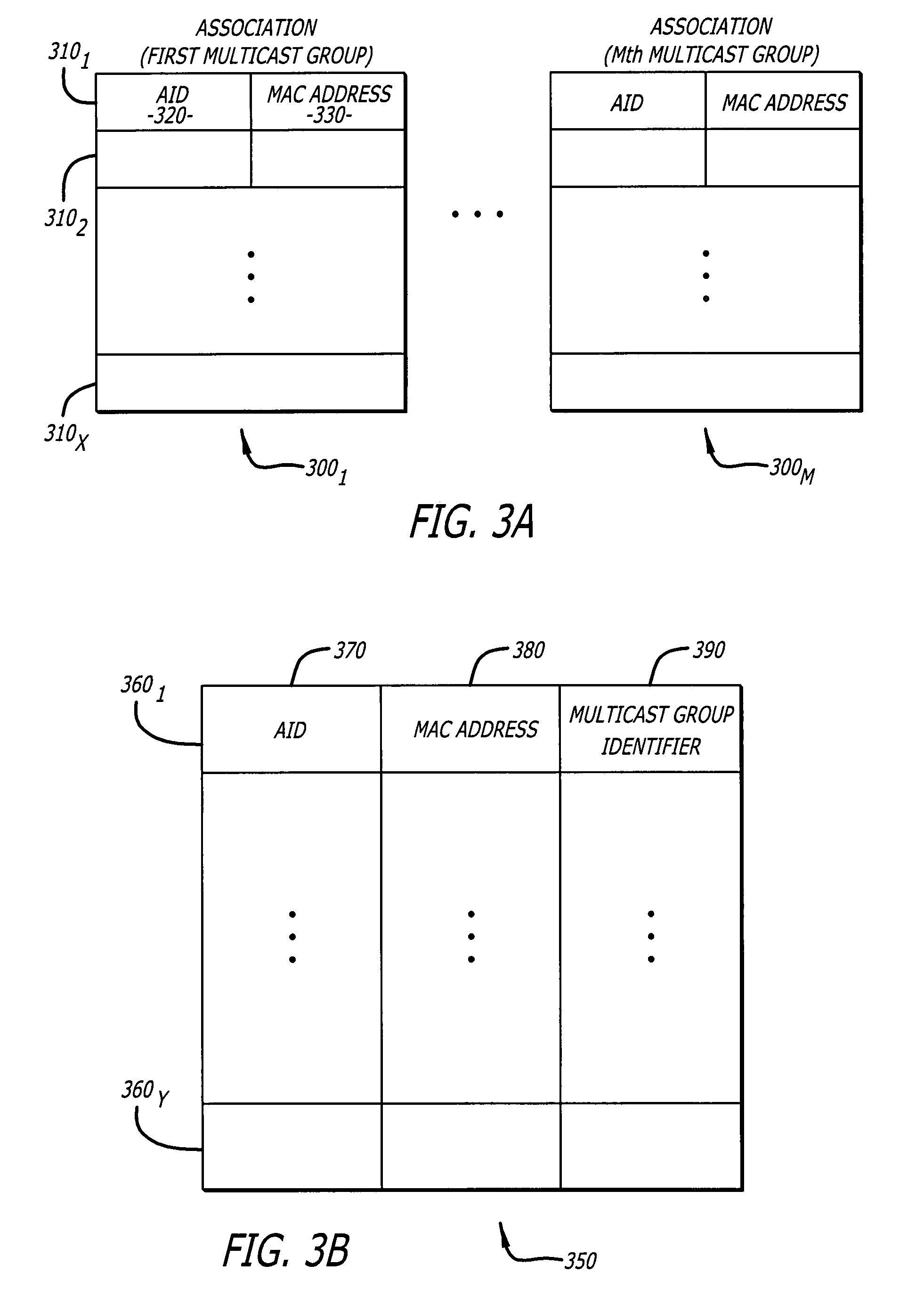System and method for extending battery life
a battery life and battery technology, applied in the field of communication, can solve the problems of low (more robust and less efficient) transmission rate, ineffective similar treatment of these transmission types, and ineffective battery life extension
- Summary
- Abstract
- Description
- Claims
- Application Information
AI Technical Summary
Benefits of technology
Problems solved by technology
Method used
Image
Examples
first embodiment
I. First Embodiment of the Power Conservation Mechanism
[0021]Referring to FIG. 1, an exemplary embodiment of a wireless network 100 supports a power conservation mechanism is shown. In accordance with one embodiment of the invention, wireless network 100 may be implemented as a wireless local area network (WLAN) including a wired network 110 operating as an Open Source Interconnect (OSI) Layer 2 / Layer 3 (L2 / L3) network. Wired network 110 supports communications between a plurality of transmitting devices 1201-120N (N≧2), such as access point (AP) 1201 and AP 1202 for example, and wired resources 130 communicatively coupled to a wired interconnect medium 115. Examples of resources 130 may include, but are not limited or restricted to servers or a wireless network switch since the power-saving techniques described below can be centralized in lieu of being implemented on independent APs.
[0022]Of course, it is contemplated that a mesh or another wireless network may be substituted for w...
second embodiment
II. Second Embodiment of the Power Conservation Mechanism
[0035]Referring now to FIG. 5, a second embodiment of the power conservation mechanism is shown. Herein, multicast-to-unicast replication can be filtered based on IP Multicast subscription database that is created in AP 1201 by an Internet Group Management Protocol (IGMP) snooping function. More specifically, AP 1201 (or external storage accessible by AP 1201) maintains both (i) an association table 500 that identifies all of the devices that are associated with AP 1201 and (ii) an IP Multicast subscription database 510.
[0036]As shown, IP Multicast subscription database 510 is formed by monitoring IGMP JOIN messages by STAs, and storing both a Multicast Group identifier 520 and a MAC address 530 of each STA issuing an IGMP JOIN message. Thereafter, if operating in the Battery-Boost mode and before transmitting a multicast message, AP 1201 determines if each MAC address for the particular multicast group (identified by the Mult...
third embodiment
III. Third Embodiment of the Power Conservation Mechanism
[0037]Referring now to FIG. 6, a third embodiment of the power conservation mechanism is shown. Herein, in order to convert non-unicast (multicast and / or broadcast) traffic to unicast traffic, AP 1201 (or external storage accessible by AP 1201) maintains an association table 600 that identifies all of the devices that AP 1201 is associated with. As shown in FIG. 6, association table 600 includes a plurality of entries 6101-610z, where z≧1. Each of these entries includes at least three corresponding fields 620, 630 and 640. A first field 620 includes an association identifier (AID) while a second field 630 includes a Media Access Control (MAC) address of the particular receiving device associated with the AP 1201. An optional third field 640 includes a code to identify the device type of the receiving device. The receiving device may provide the “device type” information during or after the association process.
[0038]For instanc...
PUM
 Login to View More
Login to View More Abstract
Description
Claims
Application Information
 Login to View More
Login to View More - R&D
- Intellectual Property
- Life Sciences
- Materials
- Tech Scout
- Unparalleled Data Quality
- Higher Quality Content
- 60% Fewer Hallucinations
Browse by: Latest US Patents, China's latest patents, Technical Efficacy Thesaurus, Application Domain, Technology Topic, Popular Technical Reports.
© 2025 PatSnap. All rights reserved.Legal|Privacy policy|Modern Slavery Act Transparency Statement|Sitemap|About US| Contact US: help@patsnap.com



